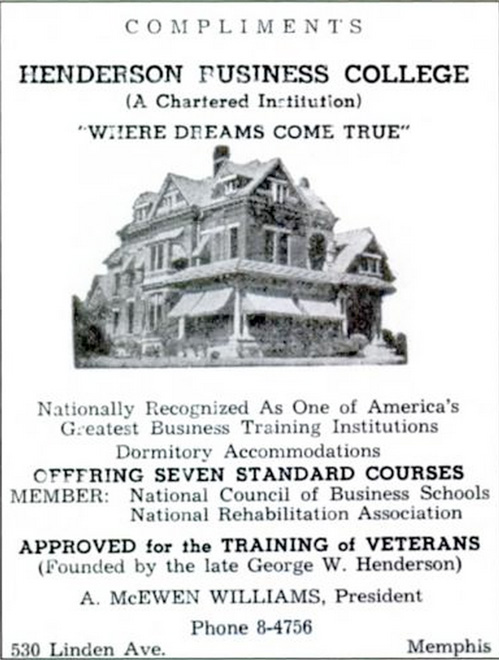In the annals of American history, the concept of integration presents a complex and often contentious narrative, particularly amidst the sprawling fabric of the Jim Crow era. One could pose a playful question: What would it mean to seek unity in a society fracturing under the heavy weight of segregation? For the Bahá’í community in Memphis, this question transcended mere rhetorical inquiry; it became a profound spiritual imperative grounded in the teachings of their faith. The Bahá’í teachings advocate for the oneness of humanity, challenging the iniquity and divisiveness grotesquely endorsed by segregationist policies.
The Jim Crow laws, enacted in the late 19th century and persisting until the upheaval of the Civil Rights Movement, created an environment of systemic racism that permeated all aspects of society—from educational opportunities to social interactions. In Memphis, like many Southern cities, this atmosphere of division and discrimination posed significant challenges for any group advocating for racial harmony and equality. Yet, the Bahá’ís, fueled by their conviction in the unity of mankind, delved into the arduous task of contemplating integration against the prevailing tide of segregation.
What does it entail to believe in a society where race and ethnicity meld into a singular identity? For Bahá’ís, the essence of their faith lies in the belief that humanity comprises a single family. This principle prompted members of the Memphis Bahá’í community to envision a society devoid of artificial barriers—where individuals are judged not by the color of their skin but by the content of their character. They were faced with a daunting challenge: how to embody and promote this ideal amidst societal structures that vehemently opposed it.
The theological underpinnings of the Bahá’í Faith compel adherents to recognize that the human race is fundamentally interconnected. The teachings emphasize the necessity of eradicating prejudices and addressing systemic injustices. Thus, the Bahá’ís in Memphis did not merely contemplate integration; they committed themselves to actions that would place them at the forefront of the struggle for equality. This conviction catalyzed community activism and outreach initiatives, all aimed at fostering dialogue among diverse racial and ethnic groups.
In the face of hostility and potential backlash, the Memphis Bahá’ís engaged in educational programs, discussions, and social gatherings designed to break down the barriers erected by societal norms. Their approach was multifaceted. For instance, they organized interfaith dialogues, inviting individuals from various backgrounds to share their perspectives and experiences. Such initiatives were not merely theoretical exercises; they sought to cultivate empathy and understanding among people from disparate walks of life.
Resistance to integration was often met with fervent resistance from institutions bolstered by entrenched racism. Thus, the Bahá’ís had to navigate a delicate balance between their principles of unity and the stark realities shaped by institutionalized prejudice. It required a courageous commitment to nonviolence and mutual respect, both hallmarks of Bahá’í teachings. Over time, their efforts bore fruit in fostering a nascent culture of acceptance and solidarity, even in the heart of a city where tensions ran high.
The Bahá’í narrative in Memphis serves as a microcosm of broader efforts across the nation. A significant aspect of their initiative revolved around the establishment of collective spaces where individuals from all backgrounds could congregate, share experiences, and collaborate toward common goals. This synthesis of social and spiritual gatherings offered a sanctuary against the harsh realities of Jim Crow segregation. Artists, activists, and intellectuals were invited to engage in cultural exchanges that celebrated diversity while advocating for social justice.
Another critical avenue embarked upon by the Memphis Bahá’ís was the incorporation of education as a tool for liberation. They recognized that ignorance often fuels hatred and division. To combat this, they championed educational curricula that underlined the importance of racial harmony and the value of understanding differing cultural heritages. Such education not only guided internal community practices; it shaped external perceptions and attitudes toward racial equity. Workshops, community readings, and literature distributions proliferated, fostering an informed citizenry capable of challenging the dubious narratives that upheld segregation.
Despite the obstacles inherent in such pursuits, the Memphis Bahá’í community bore witness to transformative changes at individual and collective levels. They confronted local injustices with tenacity and grace, embodying the teachings of their faith while standing firm against societal norms. This pursuit underscored an essential truth: true integration demands ongoing commitment, persistent dialogue, and relentless advocacy.
The Memphis Bahá’ís navigated their integration quest with a keen awareness of the temporal and spiritual dimensions of their work. They understood that their efforts were not merely a response to an immediate historical context but rather part of a broader divine mandate inspiring humanity toward unity. Thus, their contemplation of integration enveloped both the essence of Bahá’í teachings and the actionable pathways necessary to manifest it in a divided world.
Ultimately, the legacy of the Memphis Bahá’ís during the Jim Crow era is a testament to the power of steadfast conviction in the face of adversity. Their determination to promote integration amid a culture resistant to change invites contemporary Bahá’ís and allies of justice to reflect on how they can continue to dismantle barriers today. While the challenges may have evolved, the fundamental call to recognize the oneness of humanity remains perennial, urging individuals and communities alike to confront their systemic realities with imagination, courage, and an unwavering commitment to justice and unity.
